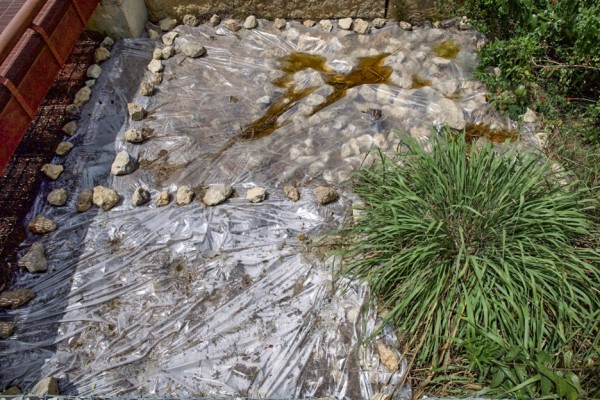
Solarization used to Combat Invasives
You may have noticed plastic tarps on the ground in the West side of the park in the grassy drainage channel near the parking lots. These have been put down as part of a project that aims to control invasive grass species in and around the park’s native grasslands.
Both Johnson grass and Bermuda grass are invasive species that quickly take over the landscape due to a lack of natural predators and parasites, pushing native grasses out of their habitats and destabilizing ecosystems. As a result of their deep and complex root systems that involve rhizomes (underground stems), it is impossible to eliminate these grasses just by pulling them out of the ground like other weeds in a garden. One way of managing them is to use herbicides, but because the same area is shared with desired native grasses and the herbicide would easily spread out underground during periods of rain, this option is not practical. This is where solarization comes in.
Solarization involves removing the visible plant matter, ensuring the soil has moisture, and then finally placing a clear plastic tarp over the area and weighing it down on the edges to trap heat and moisture. During the day, light from the sun passes through the tarp and transforms into heat as it is absorbed into and reradiated from the ground, heating the top 6 inches of soil up 140°F in the summer sun and reaching temperatures as high as 99°F a foot and a half below the surface. In addition to killing off unwanted plants and parasites, solarization increases the speed at which organic material is broken down, enriching the soil with nutrients such as nitrogen, calcium, potassium and magnesium. After several weeks the tarp is removed and the soil is left bare and fertile, ready to be reused.
Here in the park, Park Naturalist Jewell Cozort, laid down a section of tarp on May 23rd, 2018, and then on August 7th. I helped her expand the area of solarization. The tarps are planned on being removed in late September, and the area will be replanted with live roots of native Eastern Gamagrass during the last two weeks of October.
With the help of projects like these the Park hopes to help return the area to its natural ecological state, providing native insects and wildlife with a safe, healthy and balanced home.
No video selected.